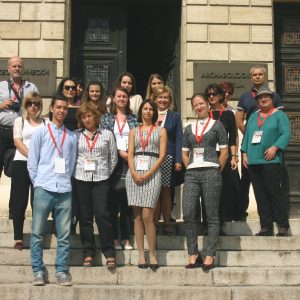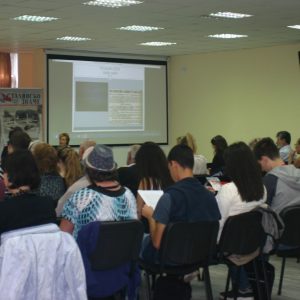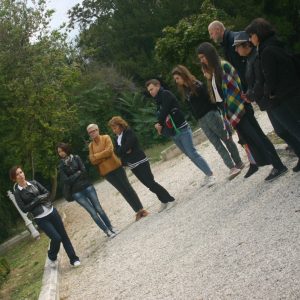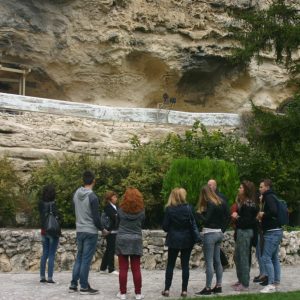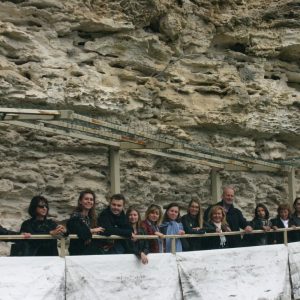Between 25 and 29 September 2017 Varna, in Bulgaria, hosted the workshop entitled I Was Citizen of Stalin Town organized by the Varna Regional History Museum.
For the participants from the partner towns, the programme included workshops, a public debate and a Stalin Town theme tour, visits to museums and other cultural and historical sites from Varna.
On 26 September 2017, according to an ancient Bulgarian tradition, the participants were welcomed at the Archaeology Museum – the largest museum of the structure of the Varna Regional History Museum with bread and salt. The programme started with the lecture Bulgaria during the Stalinist Years held by Dr. Kostadinov from the Bulgarian Science Academy. The aim of the lecture was to familiarise the guests with the political, economic and cultural situation from Bulgaria during the days of the Stalin Town. On this occasion, the hosts from the Modern History Department of the Varna Regional History Museum prepared a mini-exhibition which displayed a series of documents, paintings and items about the history and the citizens of Stalin Town.
Following this first meeting, the participants had the opportunity to visit the Archaeology Museum which hosts the oldest processed gold treasure in the world from the Chalcolithic Necropolis in Varna.
This was followed by a visit to the Retro Museum and Waxworks Museum, both unique in Bulgaria. The Retro Museum is the largest private museum dedicated to socialism in Bulgaria and it exhibits a very rich collection of items from all the spheres of the socialist era as well as over 50 cars produced and used in that period. At the Waxworks Museum the participants could see the figures of some renowned political leaders from the Stalinist era and of some art and music celebrities. The guests had the chance to take a picture with… Joseph Vissarionovich Stalin himself.
On 27 September 2017 there was a public debate about the memories from Stalin town (Varna), 1949 – 1956 in the conference hall of the Management University of Varna. 50 people were present – partners, colleagues from the cultural institutions, journalists, researchers, Varna residents who witnessed the covered period and others. The number of participants from the partner towns was the following: 4 from Romania, 2 from Albania, 3 from Hungary and 4 from Poland.
The meeting started with an introductory lecture by professor Stanislav Ivanov, vice-president of the Management University of Varna about the communist tourism heritage.
The participants from the other Stalin teams had the chance to present their own institutions and work in the project to the citizens from Varna and to listen to the personal stories of people who had lived in that period. These stories are part of the digital archive put together by the project.
The Stalin Town theme tour included a visit to those locations and buildings in Varna which were representative for the days when Varna used to be called Stalin. The participants had the opportunity to get familiarised with those years’ architecture and make a comparison with their own towns.
During the last day of their visit to Varna, the guests visited the Euxinograd Palace, presently a governmental residence. The palace was built at the end of the 19th century as the summer residence of Prince Alexander I of Battenberg. During the communist period, the royal palace was nationalised and it became a residence for the elite of the Bulgarian Socialist Party. This was followed by a visit to the most famous medieval monastery on the Bulgarian shore of the Black Sea: The Aladzha Monastery.
The visit to Varna ended with a final workshop of the project participants where they shared their impressions. Part of the volunteers from Varna highlighted some of the challenges with which they were confronted while working on this European project as well as the benefits of their participation since, and this is the most important effect, the project had raised the interest of the young generation for the history of their home town.
To promote the project and the debate, 150 flyers were printed and distributed with volunteers.
15 specialists participated in organizing visits and guided thematic tours.
You cand find more informations on museumvarna.com







